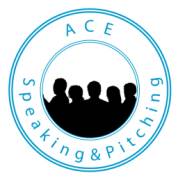Captivating your audience is the ultimate goal. A dry, data-heavy presentation can quickly turn into a snooze-fest, leaving your audience disengaged and uninterested. So, how can you transform your presentations from mundane to mesmerising? The answer lies in the art of storytelling and anecdotes. By weaving narratives into your content, you can create a connection that not only informs but also entertains and resonates. Let’s explore how you can harness the power of storytelling and anecdotes to make your presentations truly engaging.
- Connect on an Emotional Level
Anecdotes are personal stories that help humanise your content. Start your presentation with a relatable anecdote that introduces the topic and highlights its relevance. For instance, if you’re presenting a marketing strategy, begin with an anecdote about a successful campaign that sparked your interest in the topic. This establishes an emotional connection, capturing your audience’s attention from the start.
- Paint Vivid Mental Pictures
Storytelling involves creating a narrative that engages the audience’s imagination. Craft a compelling story related to your subject matter and incorporate descriptive language to evoke imagery. For instance, if you’re discussing the challenges of project management, narrate a story about a team overcoming unexpected obstacles to complete a project against all odds. By painting a vivid mental picture, you enable your audience to immerse themselves in the narrative, enhancing their understanding and retention of the content.
- Deliver Complex Ideas Seamlessly
Complex concepts can be challenging to convey effectively. Storytelling allows you to break down intricate ideas into digestible parts. Share an anecdote that parallels the concept you’re explaining. If you’re presenting a complex concept, use an anecdote about a novice learning the ropes to mirror the learning process. This connection simplifies comprehension, ensuring that your audience grasps even the most intricate ideas.
- Spark Curiosity and Suspense
Human beings are inherently drawn to stories due to their suspenseful nature. Anecdotes that leave the audience hanging or a storytelling approach involving a mystery can keep your audience intrigued throughout the presentation. For example, if your topic is about the latest technological advancements, begin with a mysterious anecdote about a groundbreaking innovation yet to be unveiled. This piques curiosity and keeps your audience engaged as they eagerly anticipate the resolution.
- Relate to Real-Life Experiences
Everyone loves a good anecdote, especially when it’s relatable. Share personal experiences or anecdotes that your audience can connect with. Relatability humanises you as a presenter and shows your audience that you understand their challenges.
- Highlight the Human Element
In a world inundated with facts and figures, stories bring the human element back into focus. As you discuss data or statistics, incorporate an anecdote that illustrates the real-world impact of those numbers.
- Foster Lasting Impressions
End your presentation with a memorable anecdote or story that encapsulates the key message you want your audience to take away. Reinforce the core theme and leave them with a lasting image that will stick in their minds long after your presentation ends.
Incorporating storytelling and anecdotes into your presentations is not just about making them interesting; it’s about creating a connection with your audience, enhancing comprehension, and fostering engagement. Adding a personal touch, relatable experiences, and the intrigue of narrative, you can transform your presentations from mere information-sharing sessions into memorable and impactful experiences.

